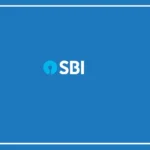1/7 – A Disputed Charge Doesn’t Mean You Have to Pay (If You Act Quickly)
If you find a suspicious or incorrect transaction on your credit card bill, don’t panic—but don’t ignore it either.
Whether it’s due to a merchant error or fraud, you can dispute charges successfully if you follow the right steps. Here’s how to protect yourself, avoid paying wrongly, and keep your credit score safe.
2/7 – Step 1: Identify and Record the Disputed Transaction
If you see a charge you didn’t authorize—like the wrong amount, a duplicate charge, or a transaction you didn’t make—note down all details.
Take a photo or screenshot. Write down the date, merchant name, amount, and transaction/reference ID. You’ll need this information when reporting it to the bank.
3/7 – Step 2: Contact the Merchant, If Possible
Sometimes, it’s just a billing error or refund that hasn’t gone through. Call or email the merchant to sort it out. You may get a quick solution.
Ask for a written confirmation—like an email or SMS—of the refund or correction. Save it. You might need to show it to your bank if the issue continues.
4/7 – Step 3: Inform Your Credit Card Company Without Delay
If the merchant doesn’t respond or the charge looks like fraud, report it to your card issuer right away. Use internet banking, mobile app, customer care number, or visit a branch.
As per RBI rules, banks usually accept disputes within 30–60 days of the billing date. The faster you act, the better your chances of avoiding liability.
5/7 – Step 4: Submit a Written Complaint With Proof
After notifying your bank, you’ll likely need to submit a Transaction Dispute Form along with supporting evidence like emails, screenshots, or refund receipts.
Most banks offer this through their app or website. Make sure to save the complaint reference number and confirmation for future tracking.
6/7 – Step 5: Don’t Pay the Disputed Amount While It’s Under Review
You are not required to pay the disputed part of your credit card bill while the issue is being investigated. But do pay the rest of the bill to avoid interest or late fees.
If the bank finds in your favour, the amount is refunded. If not, you may have to pay it along with interest if applicable.
7/7 – Step 6: Escalate to RBI Ombudsman if Needed
If your bank doesn’t resolve the dispute within 30 days, or if you’re not satisfied with the outcome, you can complain to the RBI’s Integrated Ombudsman.
File your complaint online via the CMS Portal: https://cms.rbi.org.in. Include all details and evidence. The Ombudsman usually reviews the case and responds within a month.
























